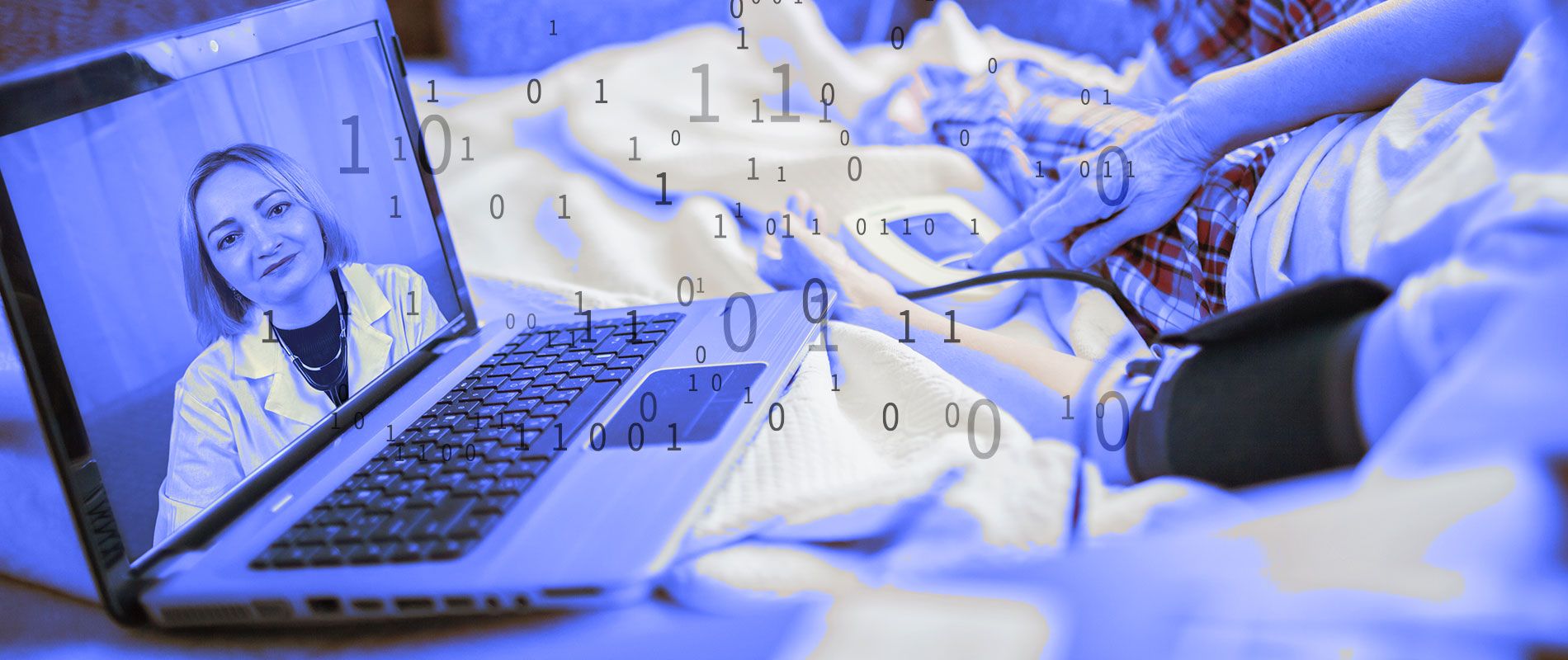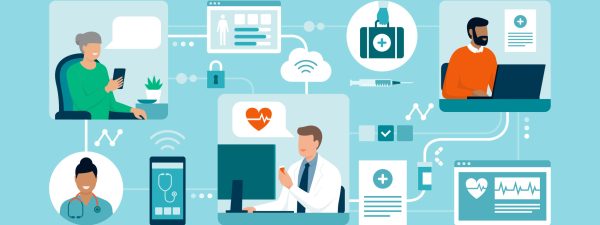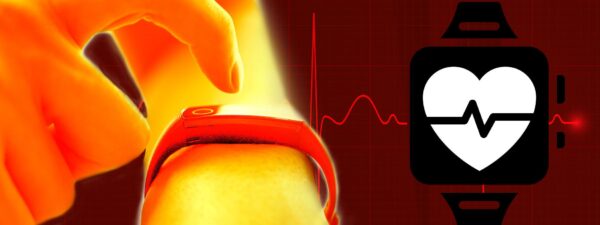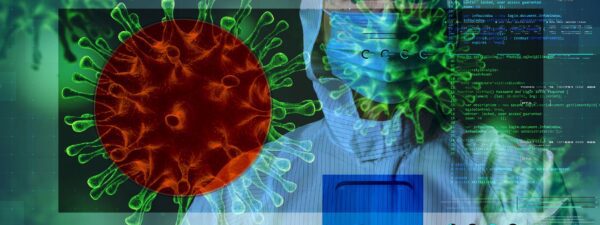Since the inception of modern medicine, patients have been going to hospitals, doctors’ offices and sometimes even emergency rooms when they’re sick. Today, we live in a digital era where patients can self-diagnose problems long before they become urgent cases requiring emergency care by using wearable devices such as digital blood pressure monitors, smartwatches, and weight scales.
Self-diagnosis can be dangerous. It’s always better for patients – before going to a clinic or hospital – to have doctors review remote sensor data and make diagnoses. The problem lies with making such information available to clinicians in real-time. This is where the Internet of Things (IoT) for remote monitoring comes in.
The IoT and Remote Patient Monitoring Revolution
‘Anything, anytime, anywhere’ is a phrase often used to describe IoT’s power. And thanks to current breakthroughs, IoT in healthcare has played a significant role in revamping current systems. IoT-based solutions ensure health monitoring in hospitals, homes, and outdoors.
IoT is a particularly resonant concept for medicine as it can virtually connect anyone with any device in any location. Healthcare IoT is evolving right alongside remote patient monitoring (RPM), both of which are on their way to revolutionizing the very concept of healthcare.
Remote Patient Monitoring, Examined
RPM is a type of telehealth that uses digital technology to make it easier to collect, transmit, evaluate, and communicate patient health data via electronic equipment. Some of this equipment includes: wearable sensors, handheld instruments, and implanted devices. These devices – which do a decent job of monitoring patient health outside of traditional clinical settings – capture medical and other health data on everything from blood pressure, blood sugar, and blood oxygen levels to sleep patterns, heart rate, and toilet usage.
IoT works by recording and monitoring data on devices connected to the same network as its foundation. This means that healthcare institutions can acquire and access a wide variety of data thanks to developments such as smart sensor technologies
IoT has been incorporated into remote patient monitoring in various ways. Some of these include:
- Internet of Medical Things
The Internet of Medical Things (IoMT) is helping to improve the efficacy of medical devices as well as the speed and accessibility of medical services through remote healthcare and monitoring. Wearable sensors and gadgets connected to Internet-based health monitoring systems can be utilized to collect remote patient health data.
IoMT essentially connects healthcare devices to computer networks via the web, enabling real-time data and patient involvement. Specifically, by utilizing the locations of patients and hospitals, IoMT connects patients to doctors. It can also track prescription orders and wearable health equipment. What’s more, by accumulating a large amount of medical data, IoMT allows for doctors’ speedier disease detection and decision-making.
- Glucose Monitoring
Glucose monitoring has long proven challenging for millions of people suffering from diabetes. Not only is manually checking glucose levels and recording findings difficult, these tests only report a patient’s glucose levels at the moment the test is given. Such periodic testing may not be enough to uncover an issue if levels are changing considerably.
IoT devices solve this issue by offering continuous, automatic glucose monitoring of patients. These glucose monitoring systems not only minimize the need for manual record-keeping but also alert patients when their glucose levels are low.
- Heart Rate Monitoring
Measuring heart rates can be difficult, even for patients who visit a doctor or healthcare clinic in person. That’s because periodic heart rate checks do nothing to protect patients against rapid heart rate changes. Unfortunately, traditional hospital equipment for continuous cardiac monitoring requires patients to be permanently tied to wired machines.
Today, however, a range of IoT devices for heart rate monitoring are available, allowing patients to walk around freely while their hearts are being continuously monitored.
- Parkinson’s Disease Monitoring
Healthcare practitioners should be able to determine how the severity of the symptoms of a patient who has Parkinson’s fluctuates throughout the day in order to treat the disease successfully.
IoT devices make this process easy because they continuously gather data on Parkinson’s symptoms. The gadgets also allow patients to live their lives in their own homes, free from the stress of being confined to hospitals for long periods.
- Depression and Mood Monitoring
Other data that has been traditionally difficult to collect is information about depressive symptoms and patients’ moods. While doctors could regularly ask patients how they were feeling, they were unable to predict unexpected mood swings.
That’s why ‘mood-detecting’ IoT devices have been developed. These devices can infer information about a patient’s mental state by collecting and analyzing heart rate and blood pressure data. Advanced IoT devices can even track data such as patients’ eye movements.
- Hand Hygiene Monitoring
Until now, there have been few ways of ensuring that staff and patients in healthcare facilities clean their hands properly. As we all know, good hand hygiene reduces the danger of spreading germs and infection.
Luckily, many hospitals and other healthcare facilities now utilize IoT devices to remind patients to wash their hands before entering hospital rooms. These gadgets can also guide people on how to clean their hands in a way that reduces dangers for a specific patient.
Rx for Success: IoT + RPM = Progressive Healthcare
Not only does RPM allow for better, more precise care, but it is also especially beneficial to elderly and vulnerable patients, as well as patients with multiple comorbid conditions. RPM allows them to stay in their homes for longer periods and lowers the number of hospitalizations, readmissions, and lengths of stay, which, of course, improves quality of life and lowers costs. It also allows doctors to choose the right medicines and reduce complications proactively.
The benefits can already be observed in forward-thinking hospitals and health institutions and in many homes and home care settings. These discreet yet highly responsive RPM gadgets connect patients directly to their off-site caretakers. Indeed, healthcare IoT and remote patient monitoring have already been widely implemented in various settings, with an emphasis on linking remote and otherwise difficult-to-reach areas.
RPM allows patients to perform basic tests at home and then submit their findings to doctors in real-time using a smartphone or a variety of smart body sensors. With the increase of chronic illnesses in rural and urban locations, IoT has made it possible to provide timely and cost-effective RPM services regardless of patient location or doctor availability. That seems like something to write home about.
References




